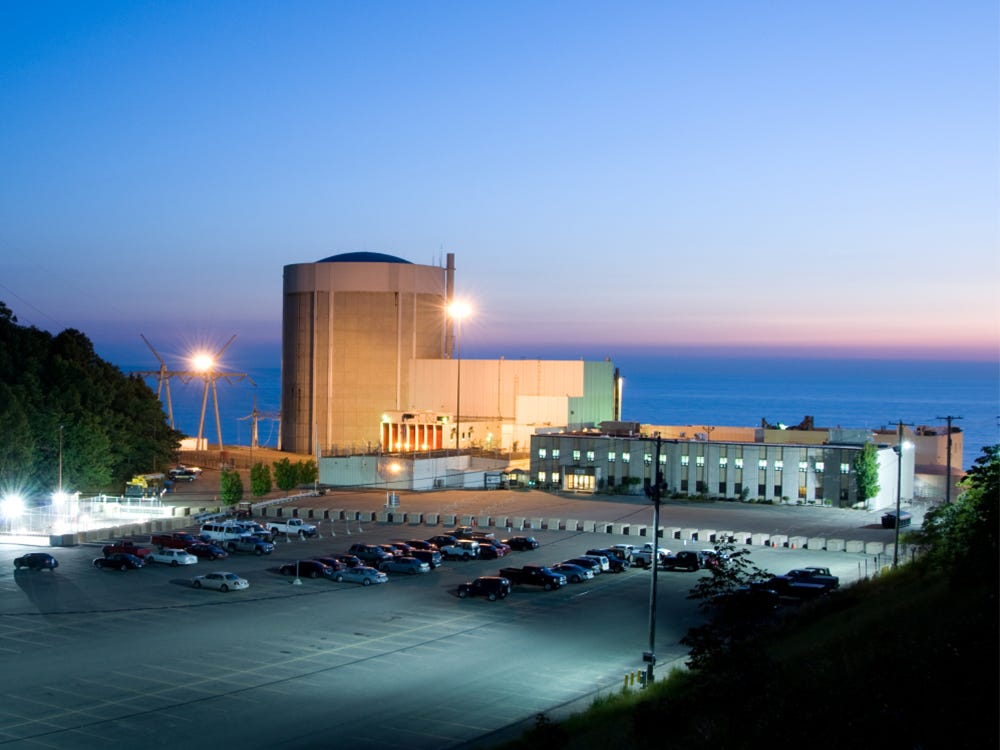On May 23, President Trump announced four executive orders aimed at reinvigorating America’s nuclear energy industry.
The orders lay out a plan to modernize nuclear regulation, streamline nuclear reactor testing, deploy nuclear reactors for national security, and reinvigorate the nuclear industrial base.
Together, they represent a bold new strategy for unleashing American energy and continuing our nation’s dominance as the world’s nuclear energy leader.
Let’s take a closer look at some of the key changes outlined in the executive orders:
1. Speed up Nuclear Reactor Licensing
President Trump wants the U.S. Department of Energy (DOE) to play a large role in significantly reducing regulatory risks to accelerate nuclear reactor licensing.
The executive orders instruct the U.S. Nuclear Regulatory Commission (NRC) to create an expedited pathway to approve reactors that have been safely tested by DOE or the Department of Defense (DoD). Also included is a comprehensive review of the NRC and the establishment of a deadline to evaluate and approve new construction and operation licenses within 18 months.
2. Add 300 Gigawatts of New U.S. Nuclear Capacity by 2050
Palisades could become the first recommissioned U.S. nuclear power plant.
Holtec International
The United States is the number one producer of nuclear energy in the world, but just three of the nation’s commercial nuclear reactors were completed in the 21st century. President Trump’s executive orders seek to accelerate deployment of new nuclear reactor technologies and expand American nuclear energy capacity from around 100 GW today to 400 GW by 2050. That includes:
Working with industry to facilitate 5 gigawatts of power uprates
Leveraging the Department’s Loan Programs Office to support reactor restarts and finish partially completed construction projects
Improving supply chains
Having 10 new large reactors with complete designs under construction by 2030
3. Lay the Groundwork for Faster Reactor Testing
The executive order proposes that three pilot reactors could be built and tested outside of the national laboratories with the goal of achieving criticality by July 4, 2026, as part of an overarching plan to shorten the length of time it takes to test advanced reactors.
Going forward, DOE will revise its regulations and guidance for expedited review and approval of reactor projects under its supervision. The Department will also use all available authorities to eliminate or expedite its environmental reviews for authorizations, permits, approvals, leases, and any other activity requested by an applicant or potential applicant.
4. Deploy U.S. Reactors for AI and Military Bases
Project Pele microreactor
DoD
Advanced nuclear technology is cited in the executive orders as a pivotal element of President Trump’s national security strategy. He directed DOE to designate AI data centers as critical defense facilities and tasked the Secretary of Energy with utilizing all available legal authorities to site, approve, and authorize deployment of advanced reactors to power them. DOE will lay the groundwork for building and operating an advanced nuclear reactor supporting AI or other critical infrastructure no later than October 2027.
DoD was also directed to build a nuclear reactor at a domestic military installation to commence operations within the next three years, with DOE providing the technical advice needed for the design, construction, and operation of these military installation reactors. The two agencies were also instructed to coordinate on assessing the feasibility of restarting or repurposing closed nuclear power plants as energy hubs for military microgrid support.
CONTINUED…
READ THE ENERGY.GOV ARTICLE HERE!
Feel free to share with friends and colleagues!






